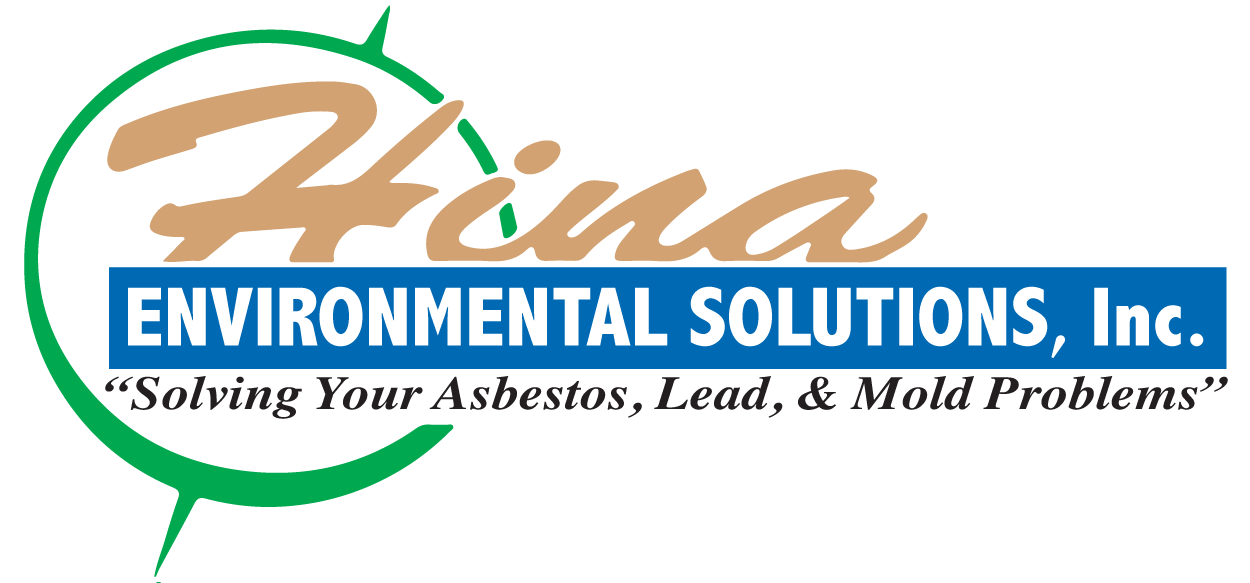Mold Remediation in Columbus Ohio
Mold Remediation: Keep Your Home and Family Safe
Mold is a common household issue that can affect the air quality and structural integrity of your home. At Hina Environmental Solutions, we are committed to providing top-quality mold remediation services to safeguard your home and health. Our experienced team follows industry best practices to address your mold concerns effectively.
We'll address all your questions and concerns related to mold remediation, ensuring you have the information you need to make informed decisions about your property's safety.
Contact us to learn more about our mold remediation services and how we can assist you in creating a healthier living environment. Your safety is our priority.

What Is Mold Remediation?
Mold remediation is a crucial process for addressing mold growth in indoor spaces, such as homes and offices. Mold, a type of fungus, thrives in moist and humid conditions, causing unsightly stains, odors, and potential health hazards. This process is vital for safeguarding both the health and structural integrity of buildings.
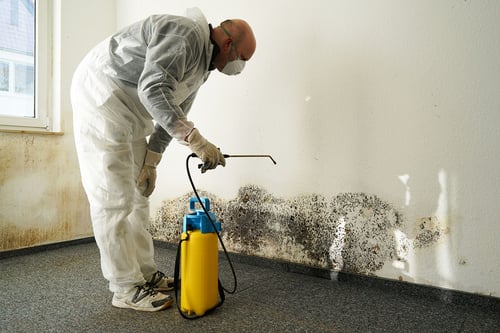
So, what is mold remediation? The first step is identifying and rectifying the source of moisture that fuels mold growth. After, specialists assess the extent and type of mold present, which helps determine the severity of the infestation and the appropriate remediation strategy.
Professional mold remediation experts are typically called in at this stage due to the need for expertise and equipment. Remediation experts use personal protective equipment (PPE) and safety procedures to prevent exposure.
The actual remediation process involves isolating affected areas to prevent mold spores from spreading. Mold-infested materials are removed and properly disposed of. Specialized cleaning agents and equipment are used to eliminate mold from non-porous surfaces, and HEPA filtration systems may capture airborne spores.
Mold remediation is essential for maintaining healthy indoor environments and preventing building damage. It involves identifying moisture sources, assessing mold extent, safely removing mold, and ensuring it does not return. This process prioritizes health and safety.
What Do Mold Remediation Companies Do?
Mold remediation companies play a crucial role in safeguarding indoor environments from the detrimental effects of mold growth. Professionals are well-equipped to address the multifaceted challenges associated with mold infestations, ensuring the health and safety of occupants. What do mold remediation companies do, and why are their services so vital?

Mold assessment stands as the initial step in their comprehensive approach. Trained technicians employ various techniques, including visual inspections and air quality testing, to identify the extent and type of mold present. This information informs the development of a tailored remediation plan.
Containment is another critical aspect of their work. Mold spores can easily become airborne during removal, potentially exacerbating the issue by spreading the infestation. Mold remediation companies use containment strategies, such as sealing off affected areas and employing negative air pressure systems, to prevent further contamination.
Mold removal is the core of their services. These professionals use specialized equipment and techniques to safely eliminate the mold, ensuring that it does not return. The removal process includes thorough cleaning and disinfection of affected surfaces and materials.
Prevention is the final key component of their work. After mold removal, remediation companies advise on preventive measures to reduce the likelihood of future infestations. This may include recommendations for moisture control, improved ventilation, and the use of mold-resistant materials.
Mold remediation companies offer a comprehensive solution to the pervasive problem of mold infestations. They begin with assessment, proceed with containment to limit the spread of mold, carry out safe and effective removal, and conclude with preventative measures to minimize the risk of future issues.
How Does Mold Remediation Work?
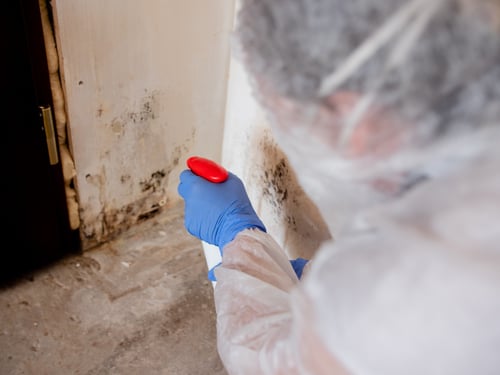 Understanding mold remediation is essential for addressing an issue effectively. How does mold remediation work? It comes down to 5 steps.
Understanding mold remediation is essential for addressing an issue effectively. How does mold remediation work? It comes down to 5 steps.
Step 1: Assessment. A certified mold inspector evaluates the extent of the mold problem and identifies the specific type of mold present. This assessment helps in determining the appropriate approach for removal and remediation.
Step 2: Containment. Containment prevents mold spores from spreading to other parts of the building during the removal process. It typically involves sealing off the contaminated area using plastic sheeting and creating negative air pressure to prevent spores from escaping.
Step 3: Removal. Mold removal is the heart of the remediation process, where mold-infested materials are safely removed. These materials may include drywall, insulation, or flooring that has been compromised by mold growth. After removal, all surfaces in the area are meticulously cleaned to ensure that no mold spores remain.
Step 4: Drying. Drying the affected area is equally important, as mold thrives in damp environments. Properly drying the area helps prevent future mold growth and ensures that the conditions are no longer conducive to mold development.
Step 5: Prevention. To complete the process, preventive measures are implemented to address the root cause of the mold issue, which is often related to moisture problems. Fixing leaks, improving ventilation, and controlling humidity are some of the actions taken to deter future mold infestations.
What Happens During Mold Remediation?
Mold remediation is a crucial process aimed at eliminating and mitigating mold infestations within homes, businesses, and other structures. When confronted with a mold issue, it's imperative to hire skilled professionals who are well-versed in the intricacies of mold removal. These experts employ specialized equipment and follow industry-approved techniques to ensure that the task is performed effectively and safely.
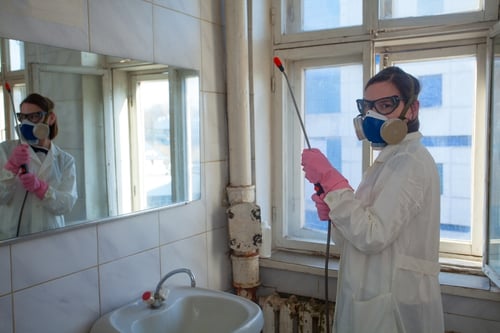
One of the first steps in mold remediation is a thorough assessment of the affected area. This involves identifying the type of mold, the extent of the contamination, and any underlying causes that may have contributed to its growth.
The removal process may include various methods, such as physically removing and disposing of contaminated materials, dry ice blasting, or using chemical agents to kill the mold.
After mold removal, professionals will often conduct post-remediation testing to ensure that the area is mold-free.
What happens during mold remediation is a meticulously orchestrated process designed to eliminate mold while safeguarding the health of occupants and preventing future infestations. This combination of expertise, specialized equipment, and industry-approved techniques is essential for a successful mold remediation endeavor.
When Is Mold Remediation Required?
Mold remediation is a critical process that becomes necessary when you are dealing with a mold infestation that surpasses 10 square feet in size. Mold is a naturally occurring fungus, and it can be found almost everywhere, but when it proliferates within the indoor environment and reaches a certain extent, it poses significant health and structural risks.
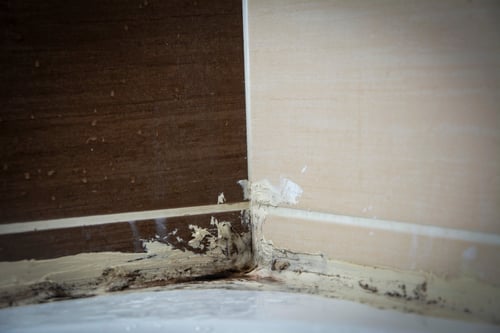
One primary trigger for mold remediation is the size of the infestation. When mold colonies cover more than 10 square feet, it becomes imperative to take immediate action. Such extensive mold growth indicates a serious moisture issue and can release large quantities of mold spores into the air, potentially leading to health problems.
Another compelling reason for mold remediation is the impact on human health. Mold exposure can cause a range of health issues, including respiratory problems, allergies, skin irritations, and more. If individuals living or working in the affected area experience these symptoms, it's a clear indication that mold remediation is required to eliminate the source of their suffering.
Structural damage caused by mold growth is another red flag. Mold can weaken and deteriorate building materials, leading to costly repairs if left unaddressed. Addressing the structural damage alongside mold remediation is crucial to ensure the safety and integrity of the affected structure.
In short, when is mold remediation required? It is essential when mold infestations exceed 10 square feet, when it impacts the health of occupants, and when it causes structural damage. Swift action is crucial to mitigate the risks associated with mold infestations and maintain a healthy indoor environment.
Do I Need Mold Remediation?
If you suspect mold in your home or have experienced health issues related to mold exposure, it's essential to consult with a professional mold inspector to assess the situation and determine if remediation is necessary. Mold, a type of fungus that thrives in damp and humid environments, can be a significant concern for homeowners. Not only is it unsightly, but it can also pose health risks.

One of the first signs that you might need mold remediation is the presence of visible mold growth. Mold often appears as black, green, or brown spots on walls, ceilings, or other surfaces, and it can give off a musty odor. If you notice these signs, it's crucial to address the issue promptly. However, not all mold growth is immediately visible. Mold can also hide behind walls, under flooring, or in the attic or basement, making it harder to detect.
Health issues related to mold exposure can range from mild allergic reactions to more severe respiratory problems. Common symptoms include coughing, sneezing, itchy or watery eyes, and skin rashes. In more severe cases, mold exposure can lead to asthma exacerbation, sinus infections, and other respiratory issues. If you or your family members experience these symptoms, it's important to consider the possibility of mold in your home and seek professional help.
Professional mold inspectors are trained to identify mold, assess the extent of the infestation, and recommend the appropriate remediation measures. They may take samples for laboratory analysis to identify the specific type of mold and its potential health risks. Based on their findings, they can advise you on the necessary steps to address the issue and prevent future mold growth.
When you suspect mold in your home or experience health issues related to mold exposure, it's crucial to consult with a professional mold inspector to assess the situation and determine if remediation is necessary. Your health and the safety of your home should be a top priority, and taking swift action in the presence of mold is essential. Don't hesitate to ask a professional, "Do I need mold remediation?" to ensure a healthy and mold-free living environment.
Should You DIY Mold Remediation?
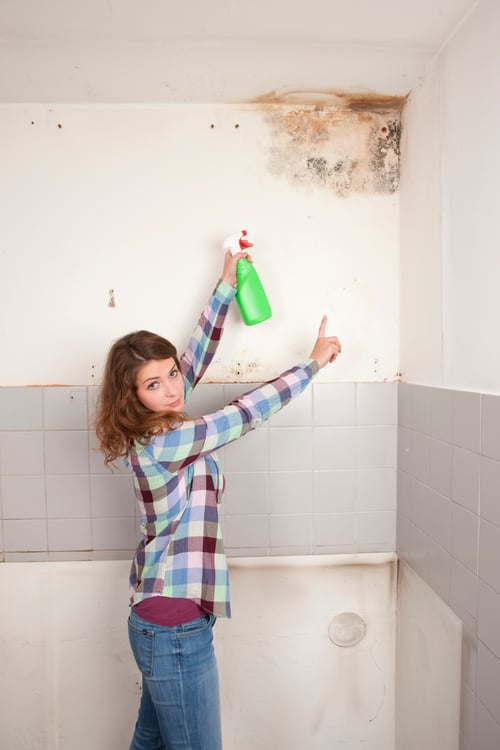 DIY mold remediation may seem like a cost-effective and straightforward solution for dealing with minor mold problems, but when it comes to significant mold infestations, it is highly recommended to seek the expertise of professionals. Mold can be a persistent and potentially hazardous problem, and tackling it without proper knowledge, equipment, and precautions can lead to a range of issues.
DIY mold remediation may seem like a cost-effective and straightforward solution for dealing with minor mold problems, but when it comes to significant mold infestations, it is highly recommended to seek the expertise of professionals. Mold can be a persistent and potentially hazardous problem, and tackling it without proper knowledge, equipment, and precautions can lead to a range of issues.
First and foremost, professionals are trained and experienced in identifying the type and extent of mold infestation, which is crucial for effective removal. They can pinpoint hidden mold sources and assess the potential health risks associated with the specific mold species present. DIY enthusiasts might not have the necessary skills to make these critical distinctions.
Professionals come equipped with the appropriate personal protective equipment (PPE) and specialized tools that ensure their safety and the thorough removal of mold. Attempting to remove mold without adequate protection can expose DIY enthusiasts to potentially harmful mycotoxins and allergenic spores. Inhaling or coming into contact with these substances can lead to a range of health problems, including respiratory issues, skin irritation, and allergic reactions.
Mold often grows in hidden or hard-to-reach areas, such as inside walls, under floors, or in crawlspaces. Professionals have the expertise to locate and address these concealed sources effectively, preventing future mold growth. DIY mold remediation may not reach these hidden areas, allowing the infestation to persist and worsen over time.
While some minor mold problems can be safely addressed with DIY methods, significant mold infestations require professional intervention. By consulting experts in mold remediation, homeowners can ensure the thorough and safe removal of mold, protecting their health, property, and peace of mind. When it comes to mold, it's always better to be safe and consult professionals for peace of mind and a job well done.
What Does Residential Mold Remediation Look Like?
Residential mold remediation is a critical process that specifically targets and resolves mold issues within the confines of homes. The presence of mold in residential spaces is not only unsightly but also poses significant health risks. As a responsible homeowner, it is imperative to prioritize the well-being and safety of your family by addressing mold problems promptly and efficiently.

Mold is a common problem in homes, especially in areas with high humidity levels. It thrives in damp, dark, and poorly ventilated spaces, making bathrooms, basements, and kitchens particularly susceptible. When left unchecked, mold can not only damage the structural integrity of your home but can also lead to a variety of health concerns.
Residential mold remediation involves a systematic approach to eliminating mold colonies, preventing their return, and ensuring the safety of your living environment. The process typically begins with a thorough inspection to identify the extent of the infestation and the type of mold involved. After assessment, a well-trained team of professionals will employ various remediation techniques, including containment, removal, and cleaning, all while adhering to industry best practices and safety protocols.
In addition to the immediate benefits of improved air quality and health, residential mold remediation can also enhance the value of your property and reduce long-term maintenance costs. It demonstrates your commitment to maintaining a safe and healthy living space for your family.
What is Black Mold Remediation?
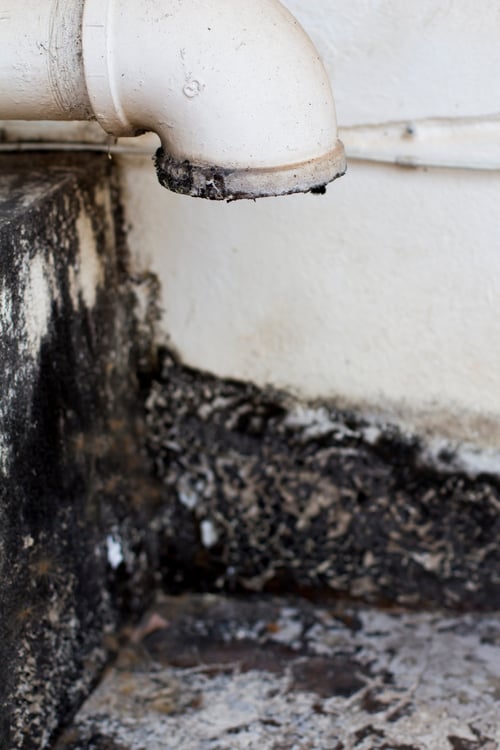 Black mold, scientifically known as Stachybotrys chartarum, is a noxious and potentially dangerous variety of mold that can have severe health implications if not properly addressed. When confronted with black mold, it is imperative to seek professional black mold remediation services. This is not a task for the inexperienced, as the handling of black mold can pose serious risks to both health and property.
Black mold, scientifically known as Stachybotrys chartarum, is a noxious and potentially dangerous variety of mold that can have severe health implications if not properly addressed. When confronted with black mold, it is imperative to seek professional black mold remediation services. This is not a task for the inexperienced, as the handling of black mold can pose serious risks to both health and property.
Black mold thrives in environments with excessive moisture, such as damp basements, water-damaged buildings, or areas with high humidity. Its dark, slimy appearance often conceals its presence, making it difficult to detect without a thorough inspection. What makes black mold so perilous is the mycotoxins it produces, which can become airborne and be inhaled, causing respiratory problems, skin irritation, and more severe health issues, especially in individuals with weakened immune systems.
Professional black mold remediation experts have the expertise, equipment, and protective gear necessary to safely remove the mold and prevent its recurrence. They start with a comprehensive assessment to identify the extent of the infestation, then create a tailored removal plan. This may involve isolating the contaminated area, using specialized ventilation and filtration systems to prevent spore dispersion, and physically removing the mold-infested materials.
In addition to ensuring safety, professional black mold remediation services can also help prevent future mold growth by addressing the underlying moisture issues and recommending appropriate measures to keep your environment dry and mold-free. When it comes to black mold, swift and effective action is paramount, and entrusting the task to experts ensures a thorough and lasting solution.
What is the Difference Between Mold Abatement vs. Remediation?
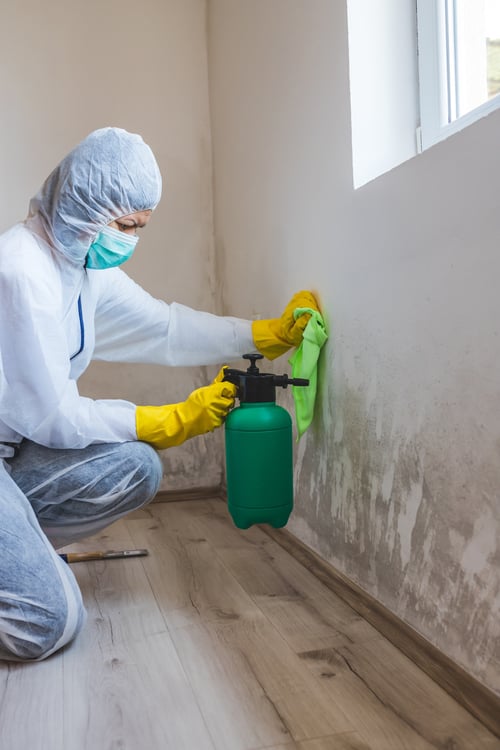 Mold abatement and remediation are two crucial processes in addressing mold infestations within indoor environments. While these terms are sometimes used interchangeably, it's essential to understand their distinctions to effectively combat mold-related issues.
Mold abatement and remediation are two crucial processes in addressing mold infestations within indoor environments. While these terms are sometimes used interchangeably, it's essential to understand their distinctions to effectively combat mold-related issues.
Mold abatement primarily centers on reducing mold levels to acceptable and manageable levels. This approach is commonly employed when the mold problem is minor and localized, and the removal of mold-infested materials is not deemed necessary.
Abatement typically includes containment measures to prevent the spread of mold spores to unaffected areas, such as sealing off the affected space and using air filtration systems to capture airborne spores. The primary goal of mold abatement is to control the situation and create a healthier indoor environment without undertaking the extensive task of complete mold removal.
While mold abatement aims to bring mold levels within acceptable limits, mold remediation goes a step further by eradicating the mold problem and preventing its return. The choice between mold abatement vs. remediation depends on the severity of the infestation, the materials affected, and the potential health risks involved.
Is Mold Remediation Covered by Insurance?
Mold remediation, a crucial process for addressing mold growth in homes, can sometimes be covered by insurance, but the extent of this coverage largely depends on the circumstances surrounding the mold infestation and the terms of your insurance policy.

Insurance typically covers mold remediation when the mold growth is a result of a "covered peril." A covered peril is an event or situation that your insurance policy specifically protects against, such as a burst pipe, a roof leak, or other water-related damage. In these cases, insurance may assist in covering the costs of mold remediation, which can include the removal of mold-infested materials, treatment, and repairs to prevent future mold growth.
However, the coverage for mold remediation can vary significantly from one insurance policy to another. Some policies may offer more comprehensive coverage, while others may have exclusions or limitations on mold-related claims. It's essential to consult with your insurance provider to review the specifics of your policy and understand the extent of coverage available to you.
To ensure that you are adequately protected, it's advisable to take preventive measures, such as maintaining your property to prevent water damage and promptly addressing any leaks or water intrusion. Being proactive can help minimize the risk of mold infestations and potentially reduce the need for mold remediation. In any case, consulting with your insurance provider and staying informed about your policy is essential to know if mold remediation is covered by insurance in your specific situation.
How Long Does Mold Remediation Take?
The timeline for mold remediation hinges primarily on the scale and severity of the mold infestation, with a multitude of factors contributing to the overall duration.
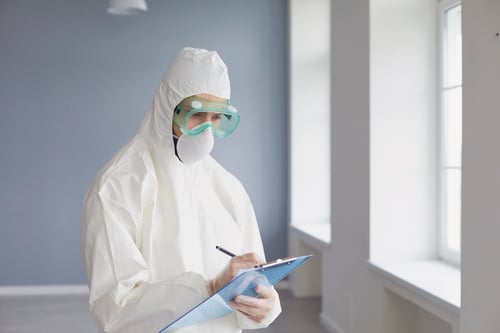
For smaller, localized mold issues, the remediation process is typically quicker and may be completed within a few days. This involves identifying the affected areas, containing the mold, removing the contaminated materials, and thoroughly cleaning and disinfecting the space. It's essential to ensure that the source of moisture, which facilitated mold growth, is addressed as well to prevent future outbreaks.
Conversely, extensive mold infestations that have permeated through walls, ceilings, or HVAC systems may require weeks to rectify. These situations demand a more comprehensive approach, often involving the removal of drywall, insulation, or other building materials. Additionally, complex HVAC systems might necessitate specialized cleaning or replacement. The process may also be prolonged if the remediation team encounters challenges in identifying and addressing all affected areas.
In any case, it is vital to engage experienced professionals for mold remediation to guarantee effective and safe results. To understand precisely how long mold remediation will take for your unique situation, it is best to have a professional assessment conducted. They can evaluate the extent of the problem and provide a more accurate estimate of the timeframe required to ensure a thorough and successful remediation process.
Is Mold Remediation Dangerous?
While mold remediation is essential for maintaining a healthy and safe environment, it is vital to acknowledge that mold remediation can be dangerous if not executed with care and expertise. This is due to the potential health risks associated with mold spores and the chemicals used during the remediation process.
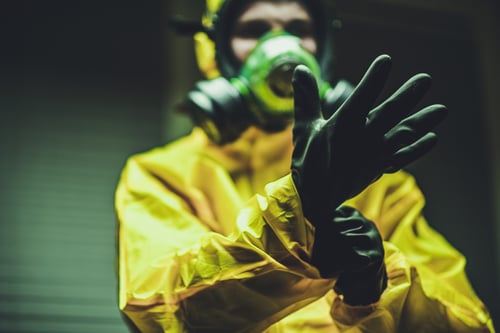
Mold spores, which are tiny airborne particles produced by mold, can trigger a range of health issues when inhaled. Prolonged exposure to mold spores can lead to respiratory problems, allergies, skin irritation, and even more severe health complications in individuals with compromised immune systems.
The chemicals employed in mold remediation, such as biocides and fungicides, can be hazardous if not handled correctly. Improper use or inadequate protective gear can result in skin or eye irritation, respiratory problems, or other adverse health effects.
To minimize these risks, it is highly recommended to enlist the services of trained professionals for mold remediation. These experts possess the knowledge and experience to assess the extent of the mold problem, use appropriate safety measures, and implement effective remediation techniques. They wear protective gear, utilize specialized equipment, and follow established protocols to ensure the safety of both the occupants and themselves during the remediation process.
Mold remediation is not a task to be taken lightly. The potential dangers associated with mold spores and chemicals make it imperative to hire professionals who are well-equipped to address these risks and safely eliminate the mold issue, promoting a healthier and safer indoor environment.
What Chemicals Do Mold Remediation Companies Use?
Professionals rely on a range of chemicals and solutions tailored to the unique characteristics of each mold problem they encounter. Among the key chemicals used, antimicrobial agents, fungicides, and biocides are prevalent choices in their arsenal.
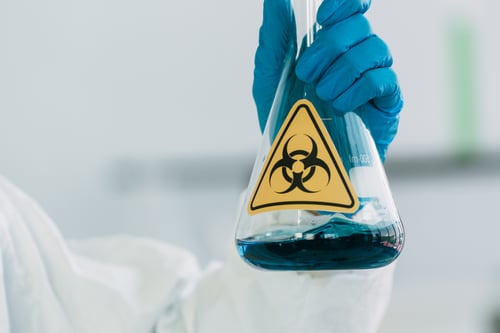
Antimicrobial agents are indispensable in mold remediation. They are formulated to destroy or inhibit the growth of microorganisms, including mold. These compounds are designed to penetrate porous surfaces and leave a protective barrier that prevents future mold development.
Fungicides, on the other hand, are specialized chemicals used to specifically combat fungal growth. They are potent in eradicating mold spores and preventing their resurgence. Fungicides are effective in treating a wide array of mold species, making them a valuable tool for mold remediation professionals.
Biocides are a category of chemicals designed to eliminate a broad spectrum of microorganisms, including bacteria, viruses, and fungi like mold. Mold remediation companies employ biocides as part of their comprehensive approach to ensure that the entire microbial population is effectively controlled, offering a healthier environment for occupants.
It is crucial to note that these chemicals are applied with the utmost care and in strict accordance with industry standards and regulations. Professionals in the mold remediation field have the knowledge and expertise to use these chemicals safely and effectively, ensuring that mold problems are resolved efficiently and without compromising the health and safety of building occupants. What chemicals do mold remediation companies use is a common question when it comes to addressing mold issues, and the answer lies in the thoughtful selection and application of these specialized products.
Can You Stay in Your Home During Mold Remediation?
In most instances, it is not advisable to remain in your home during mold remediation, primarily because of the significant health risks associated with mold exposure and the potential use of chemicals during the remediation process. Mold can release harmful spores and mycotoxins into the air, which, when inhaled, can lead to a range of health problems, particularly for individuals with allergies, respiratory issues, or compromised immune systems.
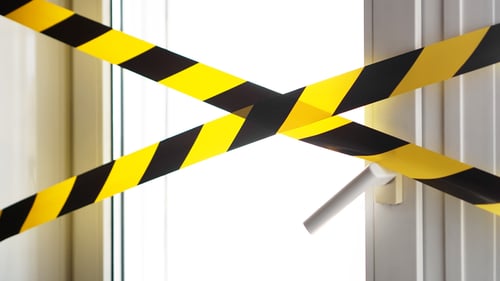
During mold remediation, trained professionals typically take several precautions to minimize these risks. They wear protective gear, set up containment areas, and use specialized equipment to ensure that mold spores do not spread to unaffected areas of the home. However, even with these precautions, there is still a risk of exposure.
Chemicals, such as fungicides and disinfectants, are often used during the mold removal process. These substances can release fumes and particles that may be harmful when inhaled. The combination of mold spores and chemicals can create an unsafe environment for occupants.
So, can you stay in your home during mold remediation? The short answer is no. It's strongly recommended to temporarily vacate the premises until the mold remediation is complete, and the experts have thoroughly assessed the air quality to ensure it's safe for occupancy. Protecting your health and well-being should be a top priority when dealing with mold issues. Only after the all-clear from the professionals should you return to your home to avoid any potential health risks.
How Effective Is Fogging for Mold Remediation?
Fogging, a process that involves applying a mold-killing solution as a fine mist, can be an effective method for mold remediation when used under the right circumstances. However, its efficacy is contingent on several critical factors that need to be considered to ensure its success. These factors include the type of mold infestation, the extent of the mold growth, the nature of the affected materials, and the specific products used in the fogging process.
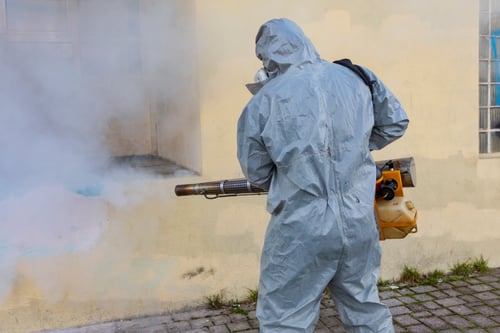
One of the primary determinants of how effective fogging is for mold remediation is the type of mold involved. Not all molds are the same, and some may be more resistant to certain mold-killing solutions. Therefore, a professional mold assessment is crucial to identify the mold species and choose an appropriate treatment method. Furthermore, the extent of the mold infestation matters significantly. Fogging may be more effective for smaller, localized mold problems, but for extensive or deeply embedded mold, additional measures like removal of affected materials may be necessary.
The choice of the mold-killing solution and the equipment used for fogging are also key factors. Professionals employ specialized tools that disperse the solution as a fine mist, ensuring even coverage. The selected chemicals should be effective against the specific mold species present, and safety precautions must be followed to protect both the remediation workers and the occupants of the space.
Fogging can be a valuable tool in the mold remediation arsenal, but its effectiveness is contingent on proper assessment, the type and extent of the mold infestation, and the appropriate choice of chemicals and equipment. When used in combination with other remediation methods and under the guidance of experts, fogging can be a vital step in the process of eliminating mold-related issues.
What to Do After Mold Remediation?
It's important to consider what to do after mold remediation to maintain a mold-free space in the long term. Addressing the root causes of mold growth is paramount. Common causes include water leaks, poor ventilation, and high humidity levels, so tackling these issues is crucial.
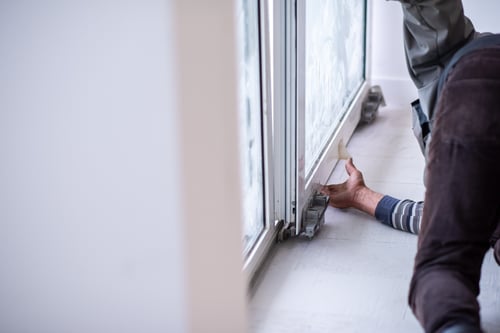
First and foremost, it's essential to fix any sources of moisture that led to the mold problem. This may involve repairing plumbing leaks, replacing damaged roofing, or improving ventilation systems. Proper ventilation can help reduce humidity, which is a key factor in mold growth.
Regular inspections and maintenance are your best allies in preventing future mold issues. Periodically check your home for signs of water damage or leaks, and promptly address any issues you find. Ensure your home is adequately ventilated, especially in areas prone to moisture buildup like bathrooms, kitchens, and basements. Dehumidifiers can be beneficial in maintaining appropriate humidity levels.
In addition to addressing structural concerns, consider using mold-resistant materials in areas where moisture is a recurring problem. These materials can help inhibit mold growth and are a valuable preventive measure.
Maintaining good indoor hygiene is essential. Regular cleaning with mold-inhibiting products in high-risk areas can help keep mold at bay. Keep in mind that mold spores are everywhere, but controlling the conditions that allow them to thrive is key to a mold-free environment.
What to do after mold remediation is just as important as the remediation process itself. By addressing the root causes, conducting regular inspections and maintenance, and adopting preventive measures, you can enjoy a healthy, mold-free living space.
Can Mold Come Back After Remediation?
Mold is a resilient and pervasive problem that can pose serious health risks and structural damage. The question "can mold come back after remediation" highlights a critical aspect of dealing with mold infestations: the importance of addressing the root cause of the issue.

Mold remediation is not just about removing visible mold growth; it involves identifying and eliminating the conditions that allowed mold to flourish in the first place. Mold requires moisture to grow, so if the source of this moisture is not properly addressed, it can indeed come back even after seemingly successful remediation efforts.
To prevent mold from returning, it's crucial to fix any water leaks, repair damaged roofing or plumbing, and improve ventilation within the affected area. Moisture control is key to preventing mold's resurgence. In addition to these measures, it may also be necessary to use dehumidifiers to maintain proper humidity levels and ensure that the space is adequately ventilated to promote airflow and prevent moisture buildup.
Regular inspections and maintenance are essential to keep mold at bay after remediation. While mold can come back, taking proactive steps to control moisture and improve the overall environment can significantly reduce the risk of its return. Proper remediation combined with ongoing preventive measures will help ensure that mold doesn't make a comeback in your home or building.
Mold Remediation: Keep Your Home and Family Safe
 In conclusion, when it comes to mold remediation, prioritizing the safety of your home and family is paramount.
In conclusion, when it comes to mold remediation, prioritizing the safety of your home and family is paramount.
At Hina Environmental Solutions, we are dedicated to delivering high-quality mold remediation services that not only protect your property but also ensure the well-being of your loved ones. Our experienced team adheres to industry best practices, and we are here to address all your questions and concerns.
Don't hesitate to reach out to us to learn more about our services and how we can help you create a healthier living environment. Your safety remains our top priority.
